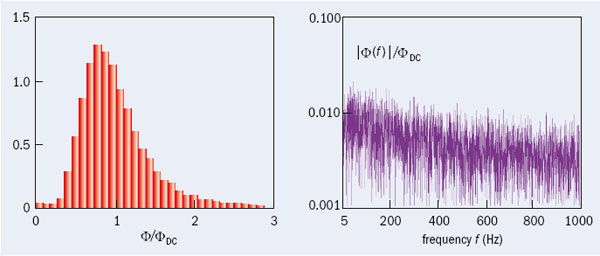
The new advanced slow stochastic extraction (SSE) system at the U70, the 70 GeV proton synchrotron at the Institute for High Energy Physics (IHEP) in Protvino, has operated successfully during normal running in 2006. The aim is to use the technique to produce longer, more uniform spills than can be achieved with the standard extraction, which uses magnetic optics to move particles to the transverse resonance.
The first feasibility tests for SSE at the U70 took place in late 2004. These tests yielded natural stochastic spills, which were superimposed by radiofrequency noise with power spectra kept invariant through the extraction time. Such spills inherently had no flat-top in their DC content, however, and so were not useful for users. Since then, the beam physicists and engineers at IHEP have continued their efforts towards an operational SSE scheme and have developed some sophisticated dedicated circuitry, which they beam-tested during runs in 2005–2006.
The core of the new system consists of a feedback loop that modulates the amplitude of the operational noise in response to the spill current signal, which is monitored by a beam-loss monitor located downstream of the electrostatic septum deflector. Being a DC-coupled feedback system with a finite base-band bandwidth, it is designed both to flatten and to smooth the stochastic spills.

The team has now used this system at the U70. The figures show that it has achieved the primary design goal of obtaining low-ripple flat-topped spills lasting 2–3 s, with noticeable progress in the quality of slow spills. The persistent AC ripple observed in the past in the extracted current now shows up as a random signal. It turns out that it cannot be suppressed via the feedback control used owing to the limited base-band bandwidth of the 3rd-order transverse resonance transfer-function involved in the overall closed-loop gain product.
The new SSE scheme routinely serviced the U70 during the entire run of 2006 yielding slow spills 1.1 s long, and exhibited a relatively robust and reliable behaviour consistent with the design aims. Further improvements of the SSE set-up promise a better functioning of the U70 for external fixed-target experiments in the near future.






1 Comment